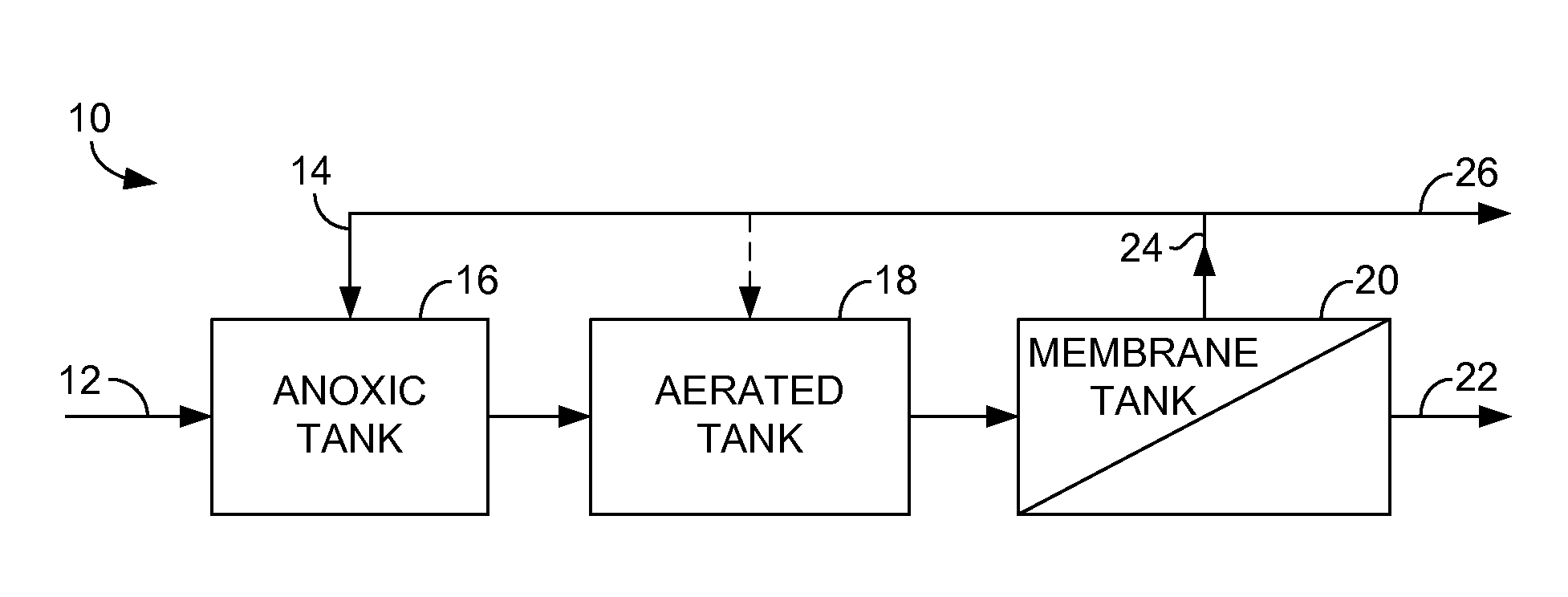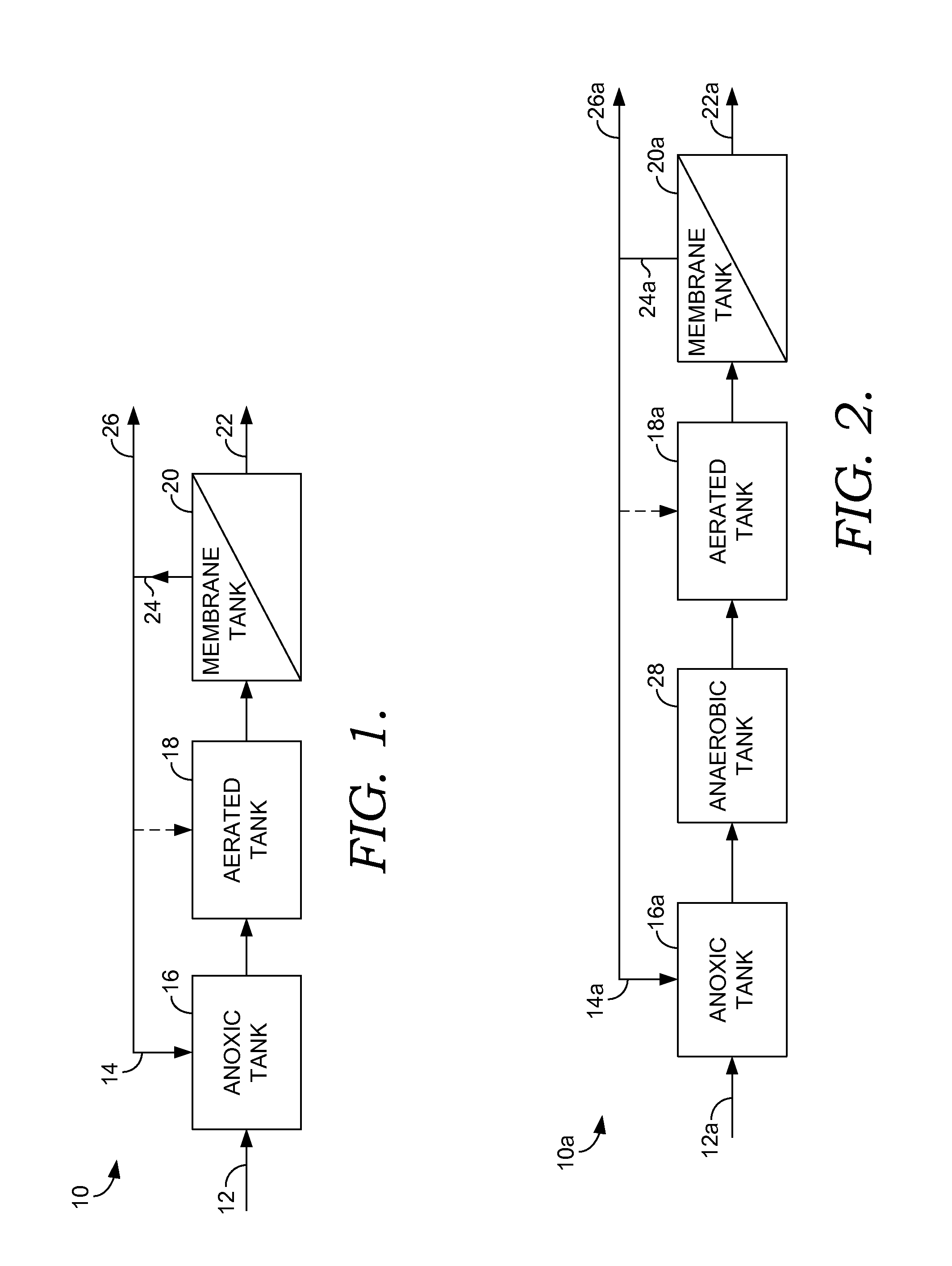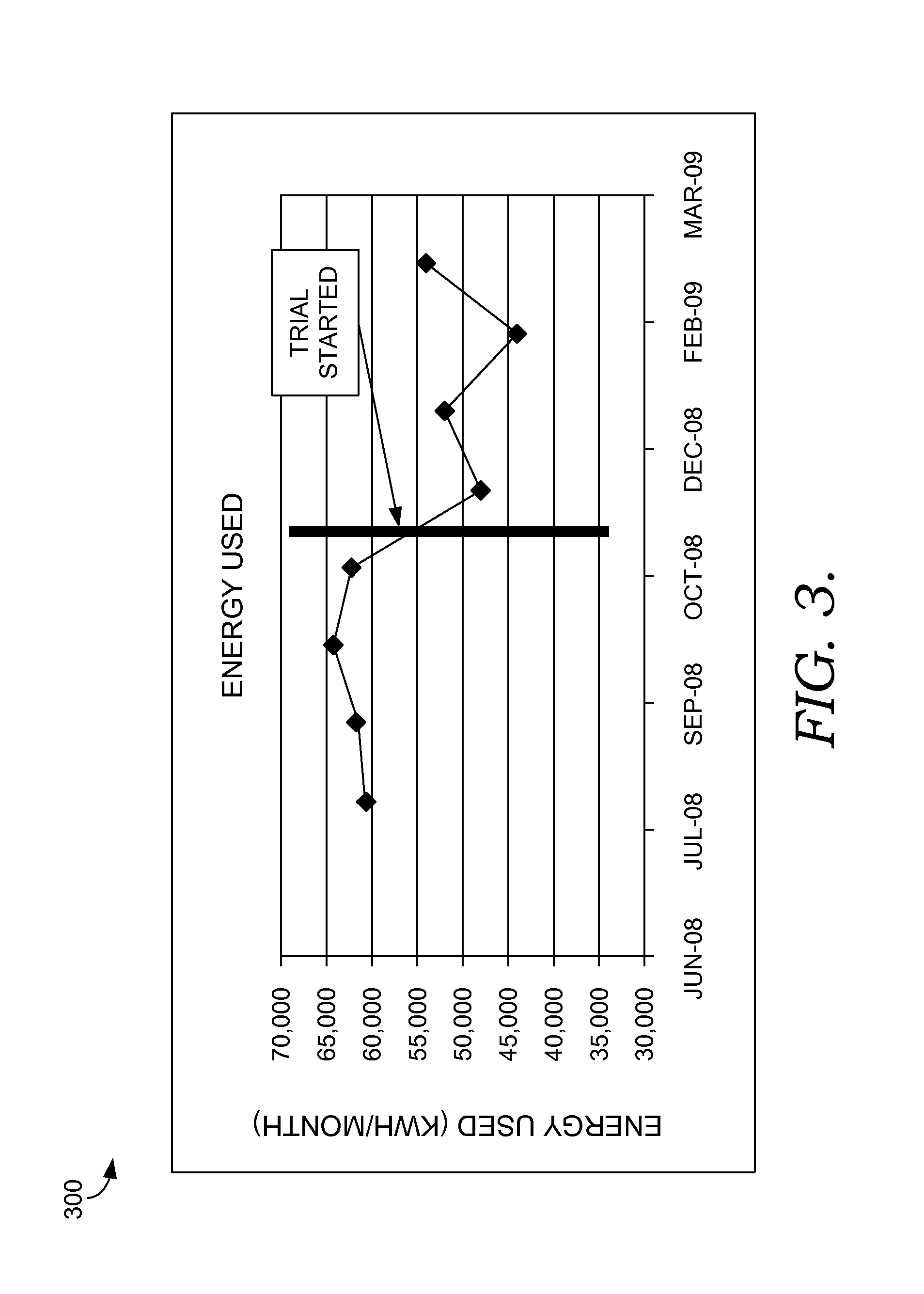Optimized nutrient removal from wastewater
a technology for removing nutrient and wastewater, applied in the direction of biological water/sewage treatment, sustainable biological treatment, membrane technology, etc., can solve the problems of increasing the cost of energy consumption contributing substantially to the cost of energy usage of wastewater treatment plants, and requiring high concentrations of dissolved oxygen, so as to promote the development of bacterial populations, and reduce ammonia in streams
- Summary
- Abstract
- Description
- Claims
- Application Information
AI Technical Summary
Benefits of technology
Problems solved by technology
Method used
Image
Examples
example
The following example illustrates a plant that has two parallel trains, including a first train (train A) and a second train (train B). The tanks in each trains are identical and are in the same location. The conditions in the tanks, however, are different. Train A represents a typical process that would occur without the user of embodiments of the present invention, while train B represents a process that uses embodiments of the present invention, such as a low dissolved oxygen concentration in the aerated tank, as previously discussed. For example, as shown below in Table 1, the dissolved oxygen concentration in the aerated tank of train A is 1.3 mg / l, while the dissolved oxygen concentration in the aerated tank of train B is 0.1 mg / l. As shown by the levels of phosphorus and nitrate / nitrite removal, in train B compared with those of train A, the lower levels of dissolved oxygen in the aerated tank allow for the development of the phosphorus-removal bacteria in the aerated tank. T...
PUM
 Login to View More
Login to View More Abstract
Description
Claims
Application Information
 Login to View More
Login to View More - R&D
- Intellectual Property
- Life Sciences
- Materials
- Tech Scout
- Unparalleled Data Quality
- Higher Quality Content
- 60% Fewer Hallucinations
Browse by: Latest US Patents, China's latest patents, Technical Efficacy Thesaurus, Application Domain, Technology Topic, Popular Technical Reports.
© 2025 PatSnap. All rights reserved.Legal|Privacy policy|Modern Slavery Act Transparency Statement|Sitemap|About US| Contact US: help@patsnap.com



